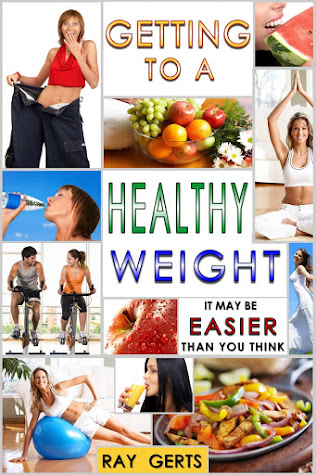In our fast-paced society, the Very-Low-Calorie Diet (VLCD) is quickly becoming the chosen fad or method of weight loss. It even comes with a guarantee of shedding those unwanted pounds yesterday.
Extreme measures of weight loss may be warranted and prescribed during a medical crisis. This would be understandable. However, applying drastic weight loss methods for the everyday person may not be safe or healthy.
Many very-low-calorie diets (VLCDs) are now being covered by insurance plans. This has made it even more appealing for people to sign on the dotted line. Not usually understood is only part of the VLCD program may be covered by insurance. The diet shakes are the largest part of the VLCD and a costly pay-out-of-pocket product.
Be cautious about any diet making unrealistic weight loss claims. Extreme weight loss programs may severely restrict food intake and recommend drinking shakes in lieu of eating. Studies on very-low-calorie diets (VLCDs) do show rapid weight loss but not without adverse health risks. According to other research, once the VLCD plan is completed, the weight is gained back plus more. These starvation-type diets are very risky and should only be tried with a doctor’s supervision. You have to take supplements and your doctor will know what you need.
The human body requires nutrients from lean proteins, carbohydrates, and healthy fats. Proper portions of these macronutrients are essential for good health. Individual calorie requirements will differ per person based on overall lifestyle and activity levels. This is where your doctor comes in. He’ll know how much to cut your calories.
Personally, I think these diets should be avoided. I always recommend going vegetarian for a couple of weeks. During that time buy some protein powder at the grocery store to supplement your required amount. Get plant protein while going vegetarian and in the 3rd week or 4th week eat some seafood and chicken breasts. After one week of eating some meat or seafood (about 4 oz. a day), go back to the vegetarian diet for a couple more weeks. While on the vegetarian diet, be careful of dairy. Dairy is high in animal fat and can add body fat. I stick to “plain Greek yogurt”, that’s my only dairy. You can add fresh fruit like berries. On a mostly vegetarian diet, you don’t have to count calories. Just avoid bingeing. I eat small quantities about 5 times a day and I don’t add sugar and an only very little salt (sea salt). One more thing, don’t drink calories except for your protein shakes, don’t drink anything with calories.
A sedentary person would require much less caloric intake compared to a marathon runner for example. Regardless of lifestyle, the human body needs calories from the major food groups to function at optimum levels and to be healthy. Very-low-calorie diets (VLCDs) can restrict essential nutrients and place a person at risk for adverse effects and health issues.
Energy needs for a body at rest (Basal Metabolic Rate) remain fairly consistent and responsible for seventy percent of calories burned each day. To calculate your basal metabolic rate, multiply ten calories for each pound of body weight for a woman and eleven calories for a man.
A 130lb woman would burn 1300 calories at rest per day. More energy is required for digestion and absorption (thermogenesis) ranging from one to eight hundred additional calories per day. Physical activity calories also offer the largest variable per person demanding even more caloric intake. Don’t over-estimate your activity. One hour of heart-pumping exercise will only burn about 300 calories, even if you’re experienced at a strenuous workout.
According to the American College of Sports Medicine, a woman should consume no less than 1200 calories per day and a man no less than 1800 calories. Also indicated extreme caloric restrictions signal the body to conserve calories and significantly reduce our metabolic rate. Very-low-calorie diets (VLCDs) allow for consumption of only 500-800 calories per day and place the body into self-starvation.
Very-low-calorie diets (VLCDs) require a person to be under the care of a physician due to possible health risks.
Some adverse effects may include fatigue, dizziness, constipation, nausea, diarrhea, and increased overall cholesterol. Research has indicated more serious health effects may include gallstone development.
Very-low-calorie diets(VLCDs) promise rapid weight loss but not a lifestyle of keeping it off. Studies show weight loss with VLCDs is commonly regained once the program is completed. Participants are not learning how to eat healthily or exercise consistently.
The safest way to lose weight is by implementing healthy methods. Nutrition and fitness education are important. Learn how to buy and prepare healthy foods and include a regular exercise program. It will be proper nutrition and exercise knowledge allowing lifelong sustainable weight loss.
Instead of overspending on packaged shakes for a temporary fix, a better investment plan would be to locate a qualified personal trainer and/or certified nutritionist. They will be able to offer substantially more quality education for a lifetime of good health.
Look for my podcasts on anchor.fm, or the podcast app on your cell phone. Search “howbaddoyouwanttoloseweight”.
If you really want to lose your body fat then look for my e-books at the websites listed below. You’ll get information on Healthy eating, exercise, and diet. Instead of spending hours on the internet reading dozens of posts, you can save time by picking up one of my e-books.
There are two e-books. “How Bad Do You Want To Lose Weight?” is available at all the online bookstores selling for $3.99. Go to any of the websites below and search the title to find my e-book. This book gives you all you need to lose weight without spending money on gym memberships, diet plans, or meal plans. Look for my book. at Amazon.com, B&N.com, iBooks, Kobo.com, Scribd.com, or Gardner Books in the U.K.
My new e-book is available on Smashwords.com, just type “getting to a Healthy Weight” in the search box at the top of the home page.







